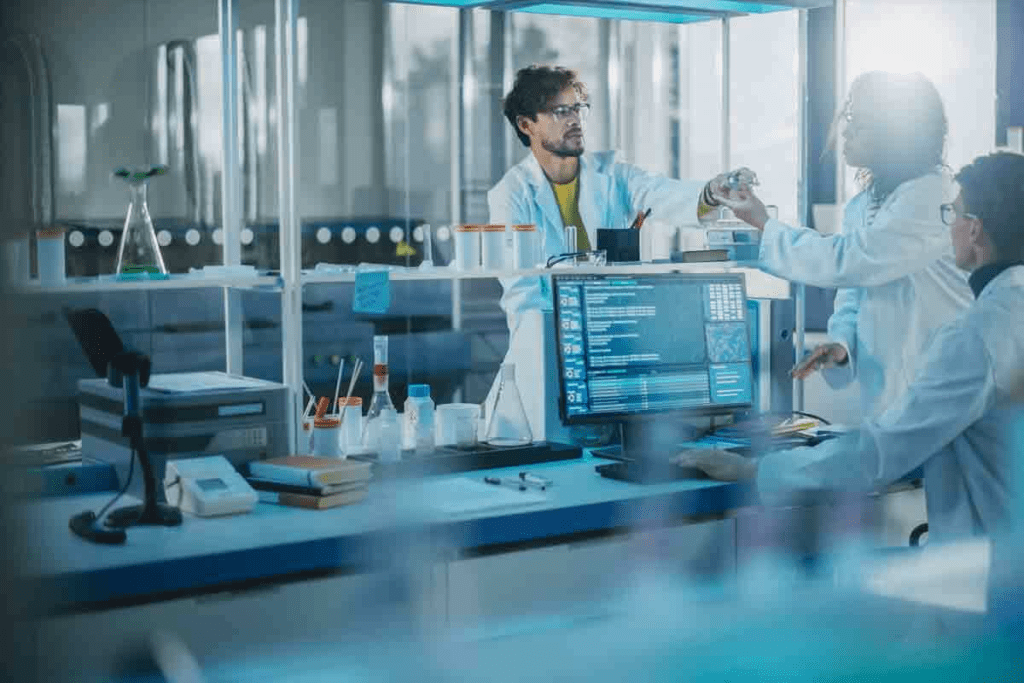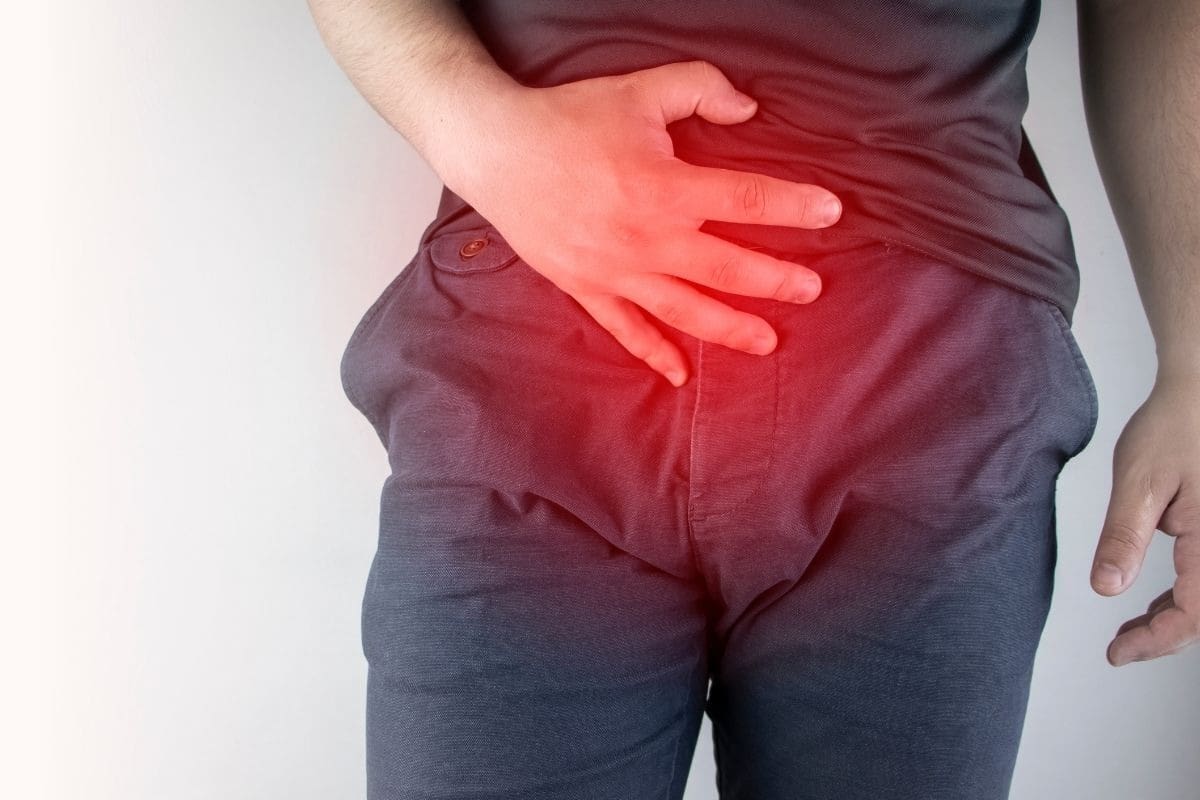Last Updated on November 27, 2025 by Bilal Hasdemir

A brain tumor diagnosis can be scary, but there’s hope. The right treatment can help manage and even cure it. A team approach is key for brain tumor management. It starts with detailed imaging, diagnosis, and a plan made just for you.
Doctors say brain tumor treatment depends on many things. These include the tumor’s type, size, and where it is. Your overall health also plays a big role. Our guide will cover all the treatment options. You’ll learn about surgery, radiation, chemotherapy, and more. Learn how to get rid of brain tumor! Discover the essential treatment options, including surgery, radiation, and chemotherapy.
Key Takeaways
- Effective brain tumor management involves a multidisciplinary approach.
- Treatment plans are personalized based on tumor characteristics and patient health.
- Various treatment options are available, including surgery, radiation therapy, and chemotherapy.
- Advanced imaging and diagnosis are key to a treatment plan.
- Specialized care places like MD Anderson offer full treatment options.
Understanding Brain Tumors

Understanding brain tumors is key to fighting them. They can be benign or malignant, making diagnosis and treatment tricky. Knowing about their types, symptoms, and causes helps find the best treatment.
Types of Brain Tumors
Brain tumors fall into two main groups: primary and metastatic. Primary tumors start in the brain, while metastatic ones spread from other parts. There are many types of brain tumors, like gliomas, meningiomas, and acoustic neuromas.
Gliomas come from the brain’s glial tissue and can be low-grade or high-grade (glioblastoma). Meningiomas are usually benign and grow in the meninges. Acoustic neuromas are benign and affect the nerve from the inner ear to the brain.
Common Symptoms and Warning Signs
The symptoms of a brain tumor vary based on the tumor’s location, size, and type. Common signs include headaches, seizures, and weakness or numbness in limbs. Some people may also experience memory loss or trouble concentrating.
It’s vital to catch these symptoms early. Early treatment can greatly improve outcomes. If symptoms don’t go away or get worse, see a doctor right away.
Risk Factors and Causes
The exact causes of brain tumors are not fully known. But some risk factors have been found. These include genetic predisposition, radiation exposure, and viral infections. Knowing these can help in early detection and treatment planning.
By understanding brain tumors’ types, symptoms, and risk factors, we can tackle diagnosis and treatment better. Our aim is to provide care that meets each patient’s unique needs.
Diagnosis and Assessment

Getting an accurate diagnosis is key to treating brain tumors. We use many tools and methods to understand the tumor. This helps us create a treatment plan that fits the patient.
Advanced Imaging Techniques
Imaging is a big part of diagnosing brain tumors. We use:
- MRI (Magnetic Resonance Imaging): Gives us detailed brain images. It shows where the tumor is, how big it is, and what it looks like.
- CT Scans (Computed Tomography): Good for quick checks in emergencies. CT scans help us see the tumor and any swelling or bleeding.
- PET Scans (Positron Emission Tomography): Shows how active the tumor is. This info is important for planning treatment.
Biopsy Procedures
A biopsy is needed to confirm the diagnosis and learn about the tumor. We do:
- Stereotactic Biopsy: Uses a frame and imaging to get a tissue sample. It’s very precise.
- Open Biopsy: Involves opening the skull to get a sample. This is often done during surgery to remove the tumor.
Biopsy results tell us a lot about the tumor. They help us know the type, how aggressive it is, and its genetic makeup. This info shapes the treatment plan.
Tumor Grading and Staging
After confirming the diagnosis, we grade and stage the tumor. This tells us how serious it is and how far it has spread. We do:
- Histological Grading: Looks at the tumor tissue to see how aggressive it is.
- Molecular Profiling: Checks the tumor’s genes to find targets for treatment.
By combining imaging, biopsy, and grading info, we can accurately assess the tumor. This lets us create a treatment plan that meets the patient’s needs.
Creating a Personalized Treatment Plan
Creating a customized treatment plan is key for brain tumor patients. It considers the tumor’s specifics, the patient’s health, and their wishes.
The Multidisciplinary Approach
We think a multidisciplinary approach is vital. A team of experts, like neurosurgeons and oncologists, works together. They make sure all care aspects are covered.
This teamwork helps us find the best treatment for each patient. It’s tailored to their unique needs.
Factors Affecting Treatment Decisions
Many things affect treatment choices. These include the tumor’s type and size, the patient’s age and health, and their preferences. We also look at new research and trials for the latest treatments.
- The type and grade of the tumor
- The patient’s overall health and medical history
- The patient’s personal preferences and values
Setting Realistic Treatment Goals
Setting realistic treatment goals is important. We work with patients to understand their goals. Then, we create a plan that meets these goals.
By setting reachable goals, we can track progress. We can also adjust the plan as needed. This way, we support our patients every step of the way.
Surgical Interventions for Brain Tumors
Surgery is a key treatment for brain tumors. It offers many options based on the patient’s needs. The goal is to remove the tumor, ease brain pressure, and improve symptoms.
Craniotomy and Tumor Resection
A craniotomy involves removing part of the skull to access the brain. Surgeons then remove the tumor and some brain tissue if needed. The aim is to remove as much tumor as possible while keeping brain function intact.
The choice to do a craniotomy depends on the tumor’s size, location, and type. New imaging and surgical tools have made this procedure more effective.
Minimally Invasive Surgical Techniques
Minimally invasive surgery uses smaller cuts and less brain disruption. Techniques like endoscopic surgery or laser ablation treat certain tumors. These methods can lead to quicker recovery and less scarring.
These procedures are used for tumors hard to reach or in sensitive brain areas. The right technique depends on the tumor and the patient’s health.
Awake Brain Surgery
Awake brain surgery, or awake craniotomy, is done while the patient is awake. This lets surgeons watch brain function in real-time, lowering damage risks.
This method is great for tumors near important brain areas. It helps surgeons safely remove tumors by mapping brain function.
Risks and Recovery from Brain Surgery
Brain tumor surgery has risks like infection, bleeding, and neurological problems. Recovery time varies based on surgery extent and health.
| Surgical Technique | Risks | Recovery Time |
| Craniotomy | Infection, bleeding, and neurological deficits | Several weeks to months |
| Minimally Invasive Surgery | Less risk of infection, shorter recovery | Fewer days to weeks |
| Awake Brain Surgery | Risk of neurological deficits, emotional stress | Variable, often longer due to complexity |
Knowing the risks and benefits of each surgery helps patients make informed choices. Post-op care and rehab are key for a smooth recovery.
Radiation Therapy Options
Radiation therapy is key in fighting brain tumors. It kills tumor cells and shrinks tumors. We use it in treatment plans, giving hope to patients everywhere.
Conventional External Beam Radiation
Conventional external beam radiation therapy is a common treatment for brain tumors. It uses high-energy beams from outside the body to kill tumor cells. This method is often paired with surgery or chemotherapy.
Stereotactic Radiosurgery
Stereotactic radiosurgery (SRS) is a precise radiation therapy. It gives a high dose of radiation to a specific area. It’s not surgery but a non-invasive treatment that can be done in one session or a few fractions.
Proton Therapy
Proton therapy uses protons instead of X-rays to kill cancer cells. It’s great for tumors near important structures because it protects healthy tissues.
Brachytherapy (Internal Radiation)
Brachytherapy, or internal radiation, places radioactive material near the tumor. It delivers high doses of radiation directly to the tumor. This method protects healthy tissues nearby.
The following table summarizes the different types of radiation therapy options:
| Therapy Type | Description | Benefits |
| Conventional External Beam Radiation | High-energy beams target tumor cells from outside the body. | Widely available, it can be used with other treatments. |
| Stereotactic Radiosurgery | Highly precise radiation delivery in one or a few sessions. | Non-invasive, precise targeting of tumors. |
| Proton Therapy | Protons are used to kill cancer cells with minimal damage to surrounding tissues. | Reduces risk to healthy tissues, effective for tumors near critical structures. |
| Brachytherapy | Radioactive material is placed directly into or near the tumor. | High doses are delivered directly to the tumor, minimizing exposure to healthy tissues. |
How to Get Rid of a Brain Tumor Through Chemotherapy
Chemotherapy is key in fighting brain tumors by killing cancer cells. It’s often paired with surgery and radiation for a full treatment plan.
Oral and Intravenous Chemotherapy Drugs
Chemotherapy drugs can be taken orally or given through an IV. Oral chemotherapy is pills or liquid, while intravenous chemotherapy goes through a vein.
Drugs like temozolomide and carmustine are used. They stop cancer cells from growing and reproducing, slowing tumor growth.
Wafer Implants (Gliadel)
Wafer implants like Gliadel are used in some surgeries. These small, dissolvable wafers release chemotherapy directly into the tumor.
They target the tumor, reducing side effects from systemic chemotherapy.
Blood-Brain Barrier Considerations
The blood-brain barrier protects the brain. It keeps many substances out, including some chemotherapy drugs. This barrier can make chemotherapy less effective.
Managing Chemotherapy Side Effects
Chemotherapy can cause side effects like fatigue and hair loss. It’s important to manage these to ensure patients get the best care.
Working with their healthcare team, patients can find ways to lessen side effects. This helps them keep a good quality of life during treatment.
Advanced Brain Cancer Treatment: Targeted Therapies
Advanced brain cancer treatment has made a big leap with targeted therapies. These therapies focus on specific molecular pathways. They offer new hope for patients by providing precise and effective treatment options.
Molecular Targeted Drugs
Molecular targeted drugs target specific molecules in brain tumors. They help slow down or stop tumor growth. For example, drugs targeting the BRAF mutation have shown promise in treating certain brain cancers.
“The use of molecular targeted therapies is a big change in treating brain cancer,” says a leading neuro-oncologist. “It lets us tailor treatment to each patient’s tumor.”
Anti-Angiogenic Therapy
Anti-angiogenic therapy stops new blood vessels from forming in tumors. Tumors need these blood vessels to grow. By cutting off nutrients and oxygen, this therapy can control tumor growth.
| Therapy Type | Mechanism of Action | Benefits |
| Molecular Targeted Drugs | Target specific molecules involved in tumor growth | More precise treatment, potentially fewer side effects |
| Anti-Angiogenic Therapy | Inhibit the formation of new blood vessels | It can slow down tumor growth by cutting off the nutrient supply |
Personalized Medicine Approaches
Personalized medicine tailors treatment to each patient’s tumor. This includes genetic profiling to find specific mutations for targeted drugs.
Benefits of Personalized Medicine:
- More effective treatment due to targeting specific tumor characteristics
- Reduced risk of unnecessary side effects
- Improved patient outcomes through tailored treatment plans
As we advance in targeted therapies, they show great promise for brain cancer patients. Understanding their benefits and risks helps patients make informed treatment choices.
Immunotherapy for Brain Cancer
Immunotherapy is a new hope in fighting brain cancer. It uses the body’s own defenses to fight the disease. This method has shown great promise in treating brain tumors by boosting the immune system to attack cancer cells.
Checkpoint Inhibitors
Checkpoint inhibitors are drugs that help the immune system fight cancer better. They work by blocking proteins that stop the immune system from responding. This has shown promise in treating some brain cancers.
Examples of checkpoint inhibitors include:
- Nivolumab
- Pembrolizumab
CAR T-Cell Therapy
CAR T-cell therapy is a type of immunotherapy. It takes T cells from the blood, changes them to find cancer cells, and then puts them back in the body. This method has shown promise in treating some brain cancers by directly attacking tumor cells.
The process involves several steps:
- T cells are extracted from the patient’s blood.
- These T cells are genetically modified to produce a chimeric antigen receptor (CAR) that targets a specific protein on the cancer cells.
- The modified T cells are expanded in number and reinfused into the patient.
Vaccine-Based Treatments
Vaccine-based treatments for brain cancer aim to get the immune system to fight tumor cells. These vaccines can be made from the patient’s own tumor cells or specific proteins found in tumors.
| Vaccine Type | Description | Potential Benefits |
| Autologous Tumor Cell Vaccine | Made from the patient’s own tumor cells | Stimulates immune response against specific tumor cells |
| Peptide Vaccine | Targets specific proteins on tumor cells | Can be designed to target multiple tumor antigens |
As research keeps advancing, immunotherapy will likely become more important in treating brain cancer. By learning about the different types of immunotherapy, patients can make better choices about their treatment.
Complementary and Supportive Care
Comprehensive care for brain tumor patients goes beyond just primary treatments. It includes complementary and supportive care. These services are key to improving patient outcomes and quality of life.
Managing Treatment Side Effects
Managing treatment side effects is vital for maintaining quality of life. We use several strategies to reduce these effects. These include:
- Medications to control symptoms like nausea, fatigue, and seizures
- Physical therapy to help regain strength and mobility
- Occupational therapy to assist with daily activities
Proactive management of side effects helps patients stay on their treatment plans without big interruptions.
Neurological Rehabilitation
Neurological rehabilitation is key in helping patients recover from brain tumor treatment. Our programs are customized to meet specific needs, such as:
- Cognitive rehabilitation to improve memory and concentration
- Speech therapy for those with communication issues
- Physical therapy to boost mobility and coordination
A leading rehabilitation specialist says, “Rehabilitation is not just about recovering from treatment. It’s about gaining independence and improving overall well-being.”
“The goal of rehabilitation is to help patients achieve their maximum and live fulfilling lives.”
Nutritional Support
Nutritional support is a critical part of care, helping patients stay strong and recover. We offer advice on:
- Dietary adjustments to manage side effects
- Nutritional supplements for adequate nutrition
Psychological and Emotional Support
Psychological and emotional support are vital for mental health challenges with brain tumors. Our services include:
- Counseling and therapy for anxiety and depression
- Support groups for patients and families
Emotional support is essential for patients and their families to face brain tumor treatment challenges.
Conclusion: The Future of Brain Tumor Treatment
The future of treating brain tumors looks bright. Ongoing research and new therapies are on the horizon. At places like the Brain Tumor Institute, they have a big collection of clinical trials. This gives patients access to cutting-edge treatments that target tumors or work with the immune system.
New technologies are being tested, like precision surgery tools and ultrasound,to open up the blood-brain barrier. They’re also looking into using electrical fields to boost the effects of traditional treatments. Advanced equipment, like 3D microscopes and stereotactic units, is becoming more common in surgeries.
As we keep exploring new ways to fight brain tumors, there’s hope for patients. We’re dedicated to providing top-notch care and support. Our goal is to make sure patients get the best treatment possible.
FAQ
What are the treatment options for brain tumors?
Treatments for brain tumors include surgery, radiation, and chemotherapy. Targeted therapy and immunotherapy are also options. The right treatment depends on the tumor’s type, size, and location, as well as the patient’s health and preferences.
Can brain tumors be cured?
Yes, some brain tumors can be cured. The chance of a cure depends on the tumor’s type and grade. It also depends on how well the treatment works.
What is the role of surgery in treating brain tumors?
Surgery is often the first step in treating brain tumors. It aims to remove as much of the tumor as possible. Techniques include craniotomy and minimally invasive surgery.
How does radiation therapy work in treating brain tumors?
Radiation therapy kills tumor cells or slows their growth. It uses high-energy beams. There are different types, like stereotactic radiosurgery and proton therapy.
What is chemotherapy used for in brain tumor treatment?
Chemotherapy kills tumor cells or slows their growth. It’s often used with other treatments. Chemotherapy can be given orally or through an IV, and sometimes involves wafer implants.
What are targeted therapies, and how do they work?
Targeted therapies target specific molecules in tumor growth. Examples include molecular drugs and anti-angiogenic therapy. They are part of personalized medicine.
How does immunotherapy work in treating brain cancer?
Immunotherapy uses the immune system to fight cancer cells. It includes checkpoint inhibitors and CAR T-cell therapy. Vaccine-based treatments are also used.
What is the importance of complementary and supportive care in brain tumor treatment?
Complementary and supportive care is vital. It helps manage side effects and improves quality of life. Services include nutritional support and emotional support.
How is a personalized treatment plan developed for brain tumor patients?
A personalized plan considers the tumor’s type and the patient’s health. A team of healthcare professionals creates a tailored plan. This plan aims to improve treatment outcomes.
What are the benefits of advanced brain cancer treatment options?
Advanced treatments offer new hope for patients. They can improve outcomes and reduce side effects. This enhances quality of life.
How can patients manage treatment side effects?
Patients can manage side effects by working with their healthcare team. Medications and lifestyle changes can help alleviate symptoms.
What is the role of nutritional support in brain tumor treatment?
Nutritional support is key to maintaining health during treatment. A balanced diet helps manage side effects and supports recovery.
Can brain tumor patients receive psychological and emotional support?
Yes, patients can get support from their healthcare team. This includes counseling and support groups. It helps manage the emotional impact of treatment.
References:
- National Cancer Institute. (2025). Adult Brain and Spinal Cord Tumors Treatment (PDQ ®)“Health Professional Version. https://www.cancer.gov/types/brain/hp/adult-brain-treatment-pdq






